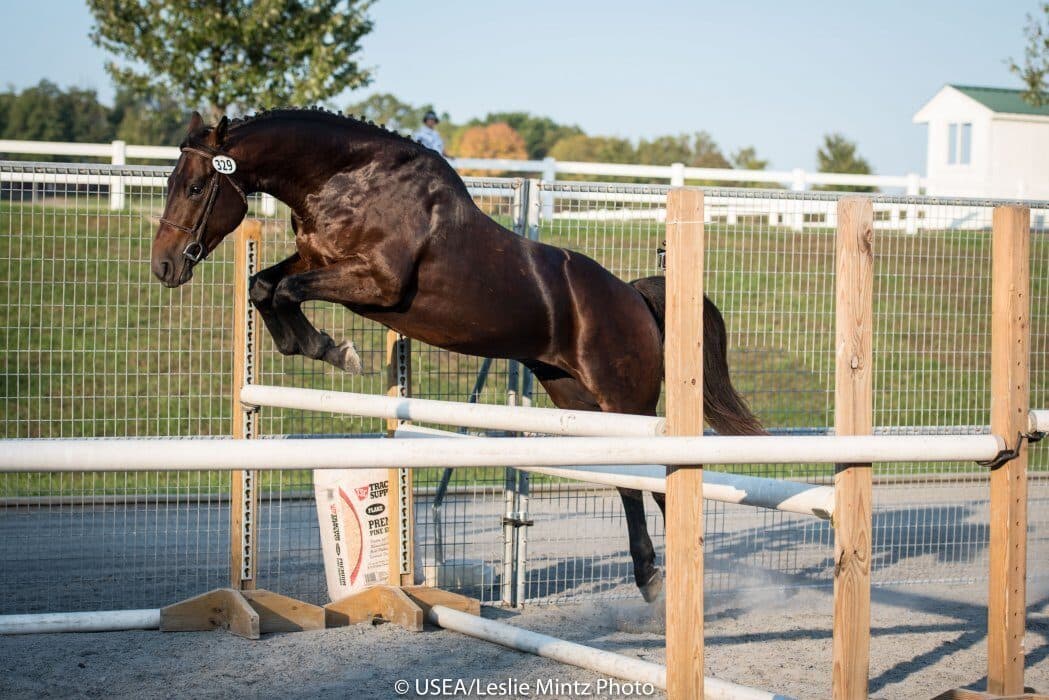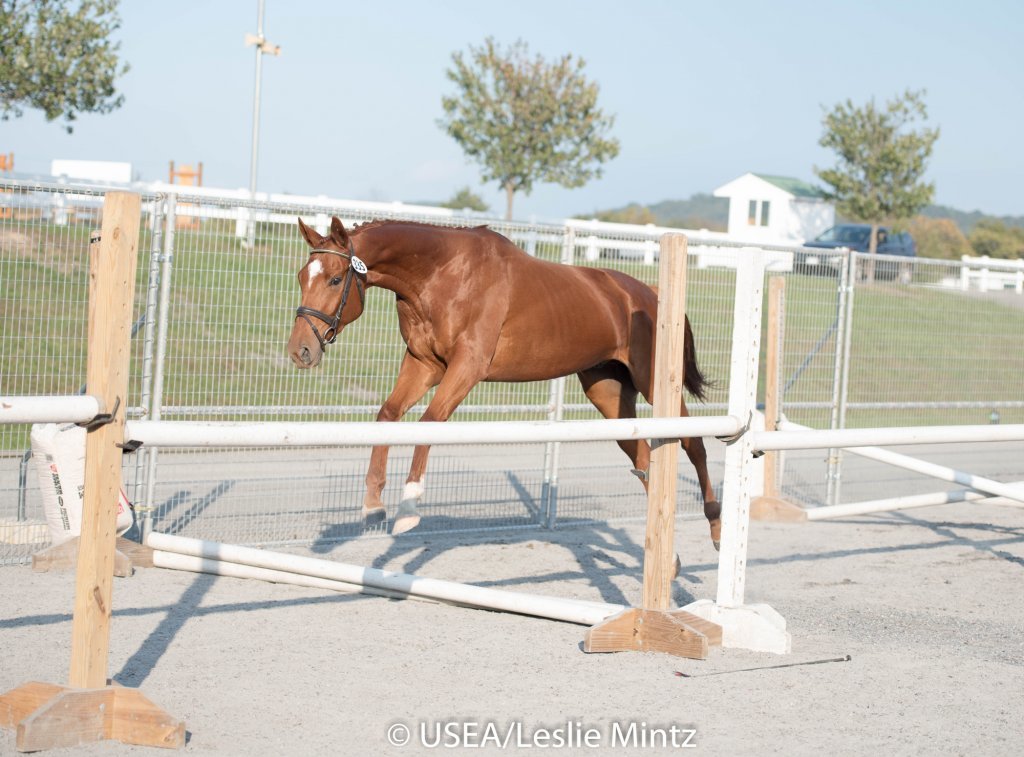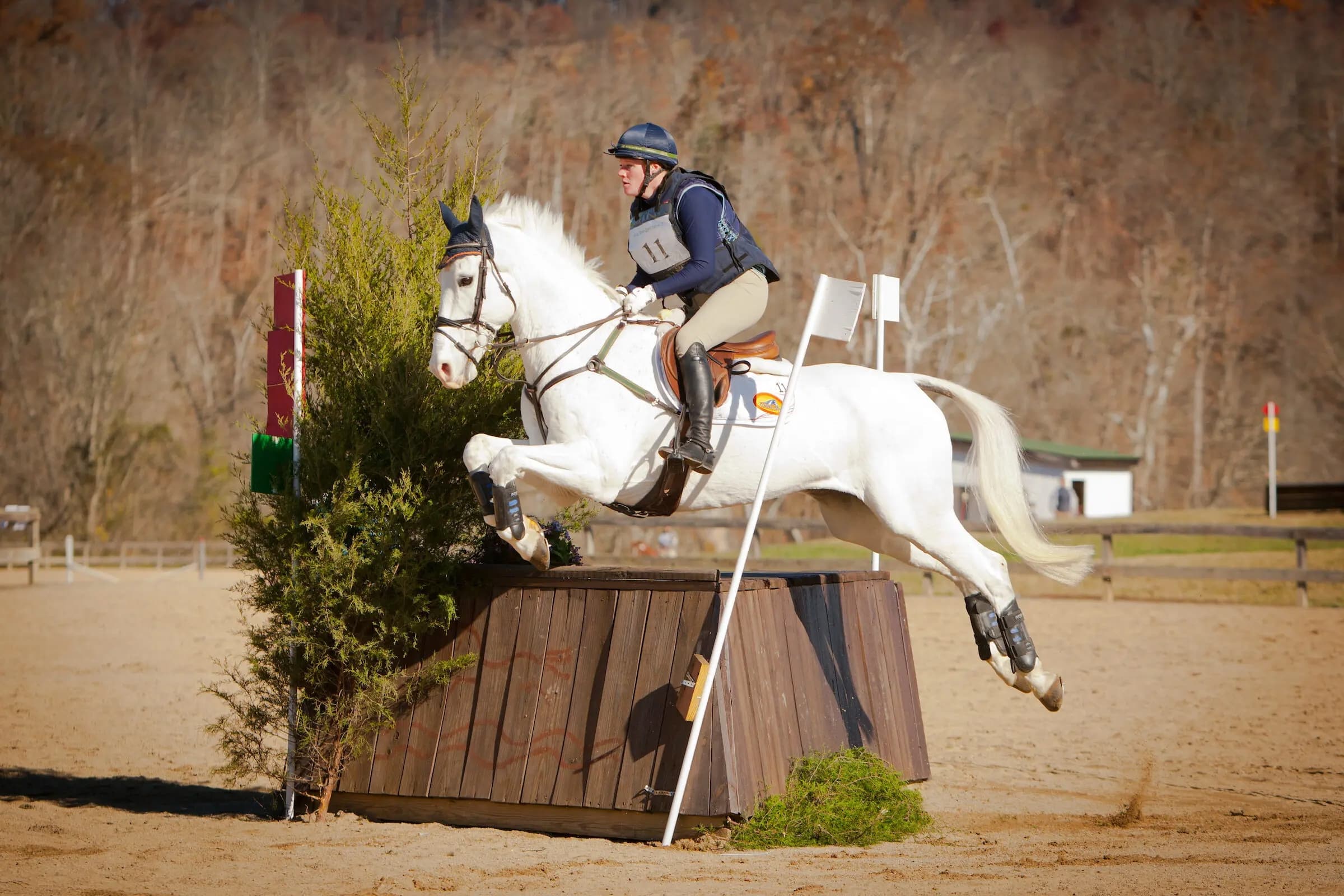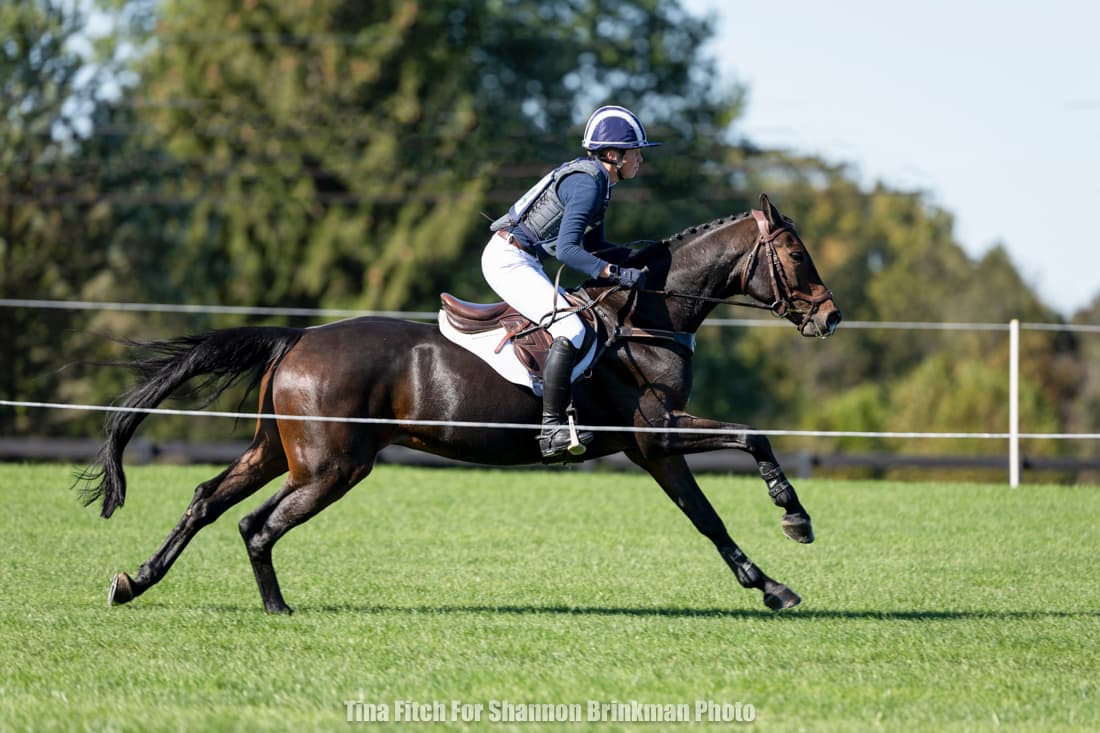Introducing Your Future Event Horse to Free Jumping with Samantha Allan

The Young and Future Event Horse article series is being provided through a partnership between Mythic Landing Enterprises, LLC., and the USEA.
Samantha Allan is a prominent name in the Future and Young Event Horse program as she can be seen judging many FEH and YEH competitions across the East and West Coast. Allan is an USEF Eventing judge (r), USEF Eventing TD (r), a USDF Bronze medalist and has successfully competed at the upper levels of Eventing. With the most recent addition of free jumping to the Future Event Horse championships, Allan explains all of the ins-and-outs that you need to know while educating your youngster at home.
When building a jumping chute in your ring at home you’ll first want to make sure the area is safe. If working in an indoor arena be sure all of the mirrors are covered and the corners are filled in. If outside, have an outside barrier at least 7’ high. Allan explains, “You want to set up the chute along one of the walls about four strides off the corner going to the left since that’s the direction that you normally lead them.” Once you’ve set up your shoot traveling counterclockwise, Allan encourages owners to use whatever ring props are available to create your chute. “You can use barrels and poles to make the chute or standards with poles on either side. Make sure to go all the way down as far as you can go, at least three or four strides after the last fence is ideal,” she said.

To create a safe jump chute arena, the surrounding fencing should be at least 7 feet high.
Once your chute has been set up, it’s time to begin adding fences. “We usually start with two or three jumps with the poles on the ground. To begin, we set one rail, 9’ to the 2nd rail, then 18’ to the 3rd rail and 19’ to the final rail. Keep the jump cups in a bucket off to the side and make sure everyone in the ring is wearing a helmet, appropriate footwear and gloves. Young horses can be unpredictable when they get excited so make sure everyone is safe first and foremost,” Allan explains.
After everything is built, it’s time to bring your horse into the ring. Allan explains that it’s important to lunge your horse first at the walk, trot and canter to warm them up. When introducing the horse to the chute early on, we do not like to let the horse just run around loose because it can wind them up, but eventually the horse can build up to cantering around on their own. Doing this offers a new way for judges to assess a horse's potential for eventing through evaluating its canter. It’s important to note that your horse can do the chute with either a halter or bridle on and to make sure you’re using some type of rope that’s at least 3’ long as you begin to lead them down the chute the first few times.
Once your horse is properly warmed up, you can begin introducing them to the poles. “To start, walk your horse through the poles and make sure that they think that’s super easy and then you can hand trot them through. Once they’re not spooking at the poles, you can set them loose and encourage them to go down on their own,” Allan describes.
Throughout this process it’s important to have a team on the ground to help you. Ideally, this group of people will practice at home frequently enough so that each person knows their job. You’d like this team to operate like a well-oiled machine at a Future Event Horse competition. Allan explained that she will lead the horse in with another ground person on the side with a lunge whip to encourage the horse to keep moving forward. There will be a person next to the second or third element with a lunge whip and then a person at the very end with a treat that encourages the horse to stop and be caught again.
If all is going well, and your horse is responding confidently to the poles, you can set small jumps. The first element should be a cross-rail, the second can progress to a vertical, and the final element can be an oxer. Only change one fence at a time, and only progress to a second fence when the first is easy. Of course, be sure to read your horse and don’t set anything that they are not ready for.

Keep it fun, and simple if need be for your young horse. Try not to overface them.
As with anything new, you may run into a few problems free jumping your youngster for the first time. Allan explains, “There are many things that can go wrong when your horse is learning to free jump. They may jump out the side, land the last jump and buck and run around, refuse a jump in the chute and so on. If it begins to get too exciting, chances are you need to take a step back and make the exercise simpler. If they do stop in the chute, don’t let them turn around. Dismantle the last element so that they can go out and are always going forward. Make sure they’re aren’t any holes on either side of the chute because they will find them and run out. Most importantly, if you’re really running into trouble, get help immediately from an experienced professional.”
To get a more visual image of how to introduce your horse to a jump chute, check out this educational video featuring Samantha Allan:
USEA Future Event Horse Introduction to Free Jumping from USEA on Vimeo.
Stay tuned for Part 2 in this series, which will continue with what to expect in the Free Jumping portion of the Future Event Horse championships and what the judges are really looking for.














